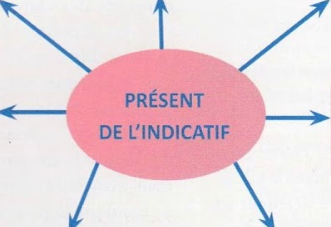The present indicative tense (le présent de l’indicatif) is used to express actions or states that are happening in the present. It is the most common tense in French and is used for general statements, habitual actions, and ongoing situations.
Conjugation of Regular Verbs in Present Indicatif:
For regular -er, -ir, and -re verbs, the present indicative is formed by removing the infinitive ending and adding the appropriate endings:
-er Verbs (parler – to speak):
Je parle (I speak)
Tu parles (You speak)
Il/Elle/On parle (He/She/One speaks)
Nous parlons (We speak)
Vous parlez (You speak)
Ils/Elles parlent (They speak)
-ir Verbs (finir – to finish):
Je finis (I finish)
Tu finis (You finish)
Il/Elle/On finit (He/She/One finishes)
Nous finissons (We finish)
Vous finissez (You finish)
Ils/Elles finissent (They finish)
-re Verbs (vendre – to sell):
Je vends (I sell)
Tu vends (You sell)
Il/Elle/On vend (He/She/One sells)
Nous vendons (We sell)
Vous vendez (You sell)
Ils/Elles vendent (They sell)
Examples:
Je mange une pomme. (I am eating an apple.)
Tu étudies le français. (You study French.)
Il regarde la télévision. (He is watching television.)
Nous habitons à Paris. (We live in Paris.)
Vous parlez espagnol. (You speak Spanish.)
Elles finissent leurs devoirs. (They finish their homework.)
In these examples, the present indicative tense is used to describe actions or states that are currently happening or habitual. It is a fundamental tense for expressing various situations in the French language.
